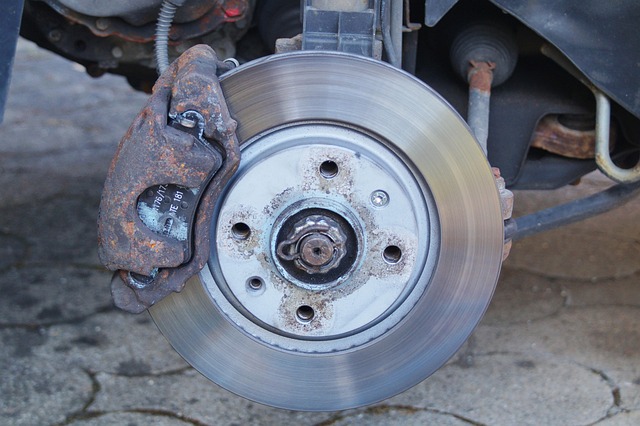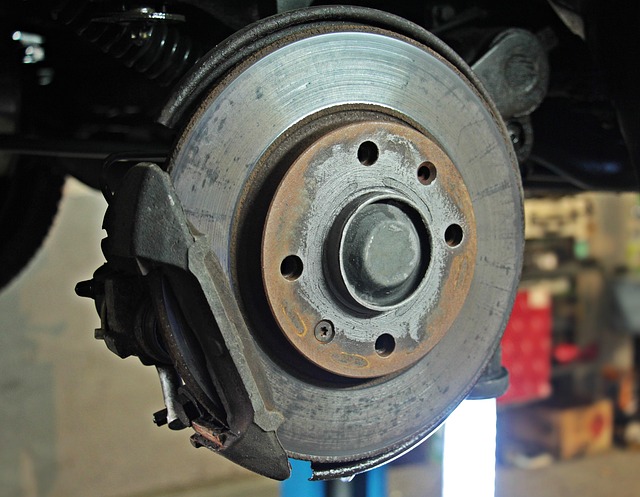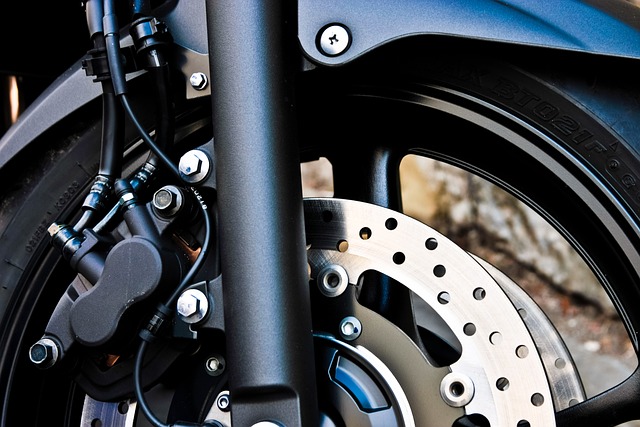Comprehensive brake inspections for Select Brake Systems are crucial for vehicle safety. Regular checks of pads, rotors, calipers, and fluid levels prevent failures. Repairs vs. replacements depend on expert assessments. Proactive maintenance enhances braking performance and extends component life for conventional and autonomous vehicles.
Keep your vehicle safe on the road with comprehensive brake inspections. This guide delves into the essential components of select brake systems, helping you identify signs of wear and tear early on. Learn how to test brake performance, check fluid levels, and ensure peak safety through regular maintenance. Understanding these critical steps will enhance your peace of mind and the overall efficiency of your braking system.
- Understanding Brake System Components
- Identifying Wear and Tear Indicators
- Testing Brake Performance and Efficiency
- Checking Fluid Levels and Condition
- Ensuring Safety with Regular Maintenance
Understanding Brake System Components

Brake systems are a crucial component of any vehicle’s safety features, and understanding their various parts is essential when considering comprehensive inspections. When it comes to select brake systems, vehicles have evolved from simple mechanical designs to highly sophisticated hydrodynamic mechanisms. These systems primarily consist of the master cylinder, calipers, brake pads, rotors (or drums), and a series of pipes and hoses for fluid transmission. Each part plays a vital role in slowing or stopping the vehicle effectively.
A key aspect of maintenance is evaluating whether to opt for master cylinder repair vs. replacement, especially as vehicles age. Additionally, high-performance brake kits for SUVs are becoming increasingly popular among off-road enthusiasts. Other services like brake rotor machining can also enhance performance and longevity. For a thorough inspection, technicians should also assess the condition of brake pads and rotors, ensuring they are within safe limits, and considering options like professional machining to restore their integrity, rather than relying solely on replacement parts.
Identifying Wear and Tear Indicators

During a comprehensive brake inspection, one of the key aspects to focus on is identifying signs of wear and tear. This involves carefully examining various components of the brake system, such as pads, rotors, calipers, and disc brakes. Select Brake Systems experts recommend regular checks for any visible damage or abnormal wear patterns. For instance, worn-out brake pads may show thinning or scoring, while rust and corrosion on metal parts can indicate moisture intrusion, which is a common cause of performance issues.
By staying vigilant for these wear and tear indicators, drivers can maintain optimal vehicle safety. For semi-truck operators, adhering to a strict brake maintenance schedule is crucial due to the inherent demands placed on their vehicles. Fortunately, many high-quality car brake replacement parts are readily available online, making it convenient for owners to keep up with regular inspections and replacements. Moreover, understanding the different types and uses of brake fluid—a key component in the hydraulic system—is essential for effective semi-truck brake maintenance.
Testing Brake Performance and Efficiency

Comprehensive brake inspections involve rigorous testing to ensure both performance and efficiency. When evaluating a vehicle’s braking system, mechanics often begin by assessing the brakes’ ability to stop the vehicle smoothly and safely. This includes checking the brake pads for wear and tear, as well as examining the rotors for any signs of damage or warping. By selecting the right brake systems, whether for light-duty or commercial vehicle brake servicing, maintenance professionals can optimize braking performance.
In addition to pad and rotor health, inspections should also focus on fluid levels and condition. Brake fluid plays a crucial role in transmitting the driver’s input to the brake calipers and wheel cylinders. Old or contaminated fluid can reduce braking efficiency, so regular checks are essential. Moreover, looking into rear brake rotor replacement cost as part of preventive maintenance can help avoid unexpected failures, ensuring that your vehicle or fleet remains reliable and safe on the road. Among the most reliable brake brands known for their performance and durability, reputable manufacturers offer solutions tailored to various driving conditions, from everyday commuting to heavy-duty commercial applications.
Checking Fluid Levels and Condition

When performing a comprehensive brake inspection, one crucial step is checking the fluid levels and condition of your vehicle’s select brake systems. This involves examining both the brake fluid itself and the components that hold it in place, such as seals and hoses. Ensuring optimal levels and detecting any signs of contamination or damage to these parts is essential for maintaining effective braking performance.
In modern vehicles, including those with autonomous driving capabilities, understanding the unique requirements of braking systems is vital. For instance, while rebuilt brake calipers for sale can be a cost-effective solution, it’s important to verify their quality and compatibility. Similarly, exploring a used brake parts marketplace might offer savings, but proper inspection ensures you’re acquiring reliable components that contribute to safe and efficient braking in both conventional and advanced vehicles.
Ensuring Safety with Regular Maintenance

Regular maintenance plays a pivotal role in ensuring the safety of vehicles, especially when it comes to select brake systems. Brake inspections are crucial, as they allow for early detection of potential issues and wear and tear, enabling prompt action to prevent accidents. By keeping an eye on braking systems, be it in conventional or cutting-edge autonomous vehicles, drivers can maintain optimal performance and control over their vehicles.
When performing comprehensive brake inspections, it’s important to consider various components, such as the master cylinder, calipers, pads, and rotors. Decisions like master cylinder repair vs. replacement or choosing to buy rebuilt brake calipers for sale should be made based on expert advice and the condition of these parts. Regular maintenance not only extends the life of braking systems but also enhances their efficiency, ultimately contributing to a safer driving experience.
Regular comprehensive brake inspections are essential for ensuring your vehicle’s safety and optimal performance. By understanding the various components of your brake system, identifying signs of wear and tear, testing brake efficiency, and regularly checking fluid levels, you can prevent serious issues on the road. Remember, selecting the right brake systems and maintaining them effectively are key to navigating with confidence and peace of mind.
